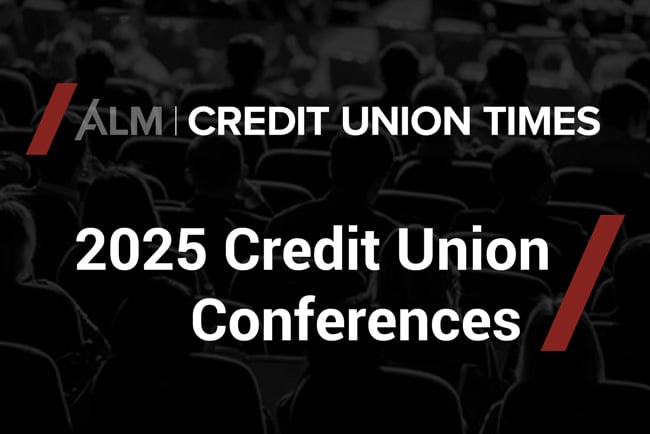MUSKEGON, Mich. — David Layman, AIA, is president of Hooker DeJong, the architectural and engineering consulting company here that takes a decidedly different approach to working with credit unions on facilities design. And Donald Mills, CEO of Alpena Alcona Area Credit Union in Alpena is a satisfied client.
"We went through a very intense process they call MEM–for member experience management–with a large number of our CU's team members and we identified the retail experience we wanted to deliver to our present and future members. We found in the end that we didn't need the size facility we envisioned at first, but really needed a smaller footprint with advanced technology," said Mills.
Not many architects would boast recommending a far less grandiose headquarters building or new branch than CEOs and boards have budgeted for or have in mind. "I see it all the time in our business, that providers overbuild for credit unions," says Layman. "But it's really about checks and balances. Let's say a credit union optimistically projects 10% annual growth–something not uncommon–even though they may not have seen more than 3%-4% growth. A design company will pitch a building based on that 10% target, sell the CU on it by warning that construction costs can only go up, that the costs of building in the future may be prohibitive and so on." The trouble, Layman said, is that's not always true.
Recommended For You
"What they don't factor in is the cost of unused space. Unused space must be maintained, it must be lit, heated, and taxes paid for it. So, where is the projected cost of future construction compared to the right-now expense of having a facility that's too big from day one? Well, it's usually not addressed. Bigger is better is how it's supposed to be, but it isn't, not always."
Layman suggests that a credit union may be better off using that unspent money promoting its brand identity, expanding its services or pursuing more community outreach and involvement, "because it's not all bricks and mortar." That may sound off base coming from a designer with half of his business in credit union facilities construction, but Layman's way has its fans.
One of them is the Alpena Area credit union, in northeast Michigan near Lake Huron. The CU initially asked Layman to design a "branch-plus" facility of approximately 17,000 square feet that would be only slightly smaller than its headquarters office. That's when the Hooker DeJong approach kicked in. In the end, the CU spent a lot less money and ended up with a much smaller, more efficient, member-convenient site of nearly 4,000 square feet with added retail options and build-out capacity.
AACU thought it would move Mills' office to the new site, yet planned to keep its accounting function and personnel at the old site. "We asked them, 'don't you interact with them often?' and the answer was yes, so it was decided to move accounting there as well," Layman noted. "But they thought members would go to the new location and we found that their present location was a better retail corridor, had better traffic patterns, a great drive-through and the new site had nothing to compare to it," he said.
"The new location is one-sixth of what they originally asked for and is now under construction. And we continue to work on staff training and sales planning," he added.
Hooker Dejong's 'holistic' approach to facilities and design planning begins with an independent strategic planner, a construction company and manager, a retail merchandiser, staff trainers and equipment manufacturers. It's about combining a solid team each of whose members brings a specific skill set and expertise that contributes to the total package, said Layman.
The best strategic planner for facilities design is one that does not work for an architect, but is independent, he said. "The best of them don't work for architects because they're in such demand, and really, if you work for an architect, isn't there an inherent conflict of interest?"
More architects would ask for more, larger, and planners who want a paycheck will do just that, so its best to separate all these functions."
Hooker DeJong has assembled a team approach using Woods Consulting Group to study market demographics and provide objectivity to start a project, Haussman Construction Company as construction manager, and Accelerate R.O.I. to work jointly with them on retail merchandizing. Accelerate R.O.I. analyzes consumer behavior, the MEM, and retail trends analysis and Hooker DeJong accommodates it into the end design for optimal delivery. Layman believes the joint consultation makes for customized marketing and sales strategies through the combined pool of talent among the firms.
"See, if you deliver a state-of-the-art space and a credit union hasn't planned how to use it effectively once it's built it's not a completed job," said Layman. "New facilities require changes in the marketing and sales training of a credit union. We often see CUs making decisions at the board or management level that don't all take all possible scenarios into consideration. Once it's built, it's too late or retrofitting costs have to be added," said Layman. "We place a lot of importance on the objectivity that comes from a team of autonomously-minded consulting firms like those with whom we have partnered," he stated. "No doubt, the greatest benefit of this type of team effort is realized by our clients."
Mills agrees. "Using that process really helped me to identify so much hidden talent on my staff," he said. "You know, nothing is more important to employees than to have their ideas discussed and sometimes adopted in management planning meetings. And when you're sitting there with the architect that's going to design the space and he's listening to you it means a lot. That total planning approach is still reaping rewards for us. We're still doing team building and training sessions and I've seen a major decline in staff turnover."
"We've made better use of our money and members' capital," Mills added. "We've put it into newer technology by incorporation of two-person POD stations (advanced kiosk workstations) and new currency handling devices and self-service biometric-based deposit boxes (using palm prints for identification."
Mills said the overall experience was great and he would recommend it to any other CEO thinking of expanding branches. "Our state of Michigan has been in a recession for a long time; we have a higher unemployment rate than the rest of the country. But our credit union has had solid growth despite all that by striving to serve members better and by being the best source of mortgage loans in our area.
"Our new branch will only add to our success, I'm sure, by creating a great stage on which our performers [the CU's staff] can put on their best show for our members."
© Touchpoint Markets, All Rights Reserved. Request academic re-use from www.copyright.com. All other uses, submit a request to [email protected]. For more inforrmation visit Asset & Logo Licensing.






